The Valdezian Ennead
What we add to this model, as a sort of stabilizing intellectual force on top of and somewhat orthogonal to the existing models presented above (Kant, Aristotle, Pirsig, Jung and others), a sort of re-alignment and shifting of intellectual ground you might say, is what we find as we explore this evolutionary process of mankind throughout history is the intermingling, the codependence really, of three forces which drive homo sapiens, civilization forward – they are theos, mythos, and persona.
This view emerges as trends that persist across advanced hominid societies over time, what you might call the three defining characteristics of societies into which all of their activities and areas of study fall in, like Aristotle’s branches of knowledge but with a more modern psychological and mystical twist.
- theos: man’s belief in the divine, his understanding of the first mover, Nature God or whatever
- mythos: man’s understanding of his place in the universe, the purpose of his life as he sees it
- persona: the mental, habitual and emotional constitution of an individual
These three together need to be added to this underlying metaphysical view of the world such that it cannot just be properly, fully understood – life that is as it exists within yourself, your community and your god effectively – but so that in understanding it, it can be properly tuned.
This theos that we find underpins any belief system about the nature of our world really, is not a belief in God per se, built the intellectual cornerstone within which one’s worldview is constructed. This worldview can be Stoic, Epicurean, naturalistic, hedonistic, agnosticism, Gnosticism, Islam, Judaism, Christian, Sufi, or whatever but it is based upon something. Lack of belief in a God, in an essential divine superordinate force which has guided, guides and will guide creation is a belief in itself – this is atheism.
Note that this is the essence of our ontological argument which we present at the end of Theology Reconsidered, the premise upon which The Valdez is constructed (piecing together Kant and Vedanta more or less) – even atheists think of course (perhaps more so than most) and a thinking man, homo sapiens, must have a metaphysical ground to such intellectualizing – i.e. Awareness.
This is one of the hidden meanings behind the famous answer to Moses that Yahweh gives to him in Exodus – the Burning Bush – when Moses asks him, who shall I say told me these things? And his answer is I am that I am, literally… ehyeh ’ăšer ’ehyeh, I shall be what I shall be. There is no present tense of the verb to be in Hebrew apparently and the word ehyeh means I am, I was and I will be at the same time. That’s odd isn’t it? How is that possible? Linguistically or otherwise? Yahweh answers with a palindrome which shatters the understanding of linear time and being itself.
This answer perhaps more so than anything else in the Bible provides the basic foundation for our understanding of theos in this age – it is from this answer that the name Yahweh is derived, the God of the Old Testament and the one which the Christians and Muslims worship as well regardless of their problems with each other’s respective theological positions.
How we relate, understand who this being that is co-eternal with us in such a real and powerful way, as the very essence of our being in fact, is theos. How we understand the universe was brought into being, and how we believe mankind was created, are core parts of this theos. For a modern-day atheist this would be Big Bang Theory and Neo-Darwinism basically – this is a belief in no god (sort of like the way the Buddhists believe in the not-soul, the anātman, or not-self).
This is the modern day theos, which is fine (functionally and ethically as long as the notion of Free Will is maintained upon which a rational grounding of ethics can be established, see Kant) – but nonetheless requires a cultural balancing intellectual paradigm, and an individual intellectual paradigm, that can provide the holistic framework required to facilitate and maintain the health and well-being of a society in the Digital Era, the full blossoming of the Information Age.
Our relationship with our god is not enough though, as a guiding force to ground us and balance us, it must be married with how we view ourselves relative to others – to family, friends, colleagues and community and more broadly society and humanity as a whole. This view, this perspective, is dictated by the narrative, the story, through which we see ourselves moving through the world – how we see ourselves in it and what powers we think we have for change and interaction in this world. Our place – our dharma.
This is mythos, as we use the term throughout, speaks to a common worldview – consisting of language, creation and other mythologies that bind a people together, that provide for the intellectual foundations of a cohesive culture. Mythos, while related to theos, is quite distinct from it – it is the intellectual foundation, what we used to call mythology, of a people that provide the framework within which individuals can interact with, and be part of, society. It defines the societies norms and ethics as well, as well as it’s relationship with other societies, how it sees its own culture within the content of the emerging global society – i.e. humanity.
Mythos is related to theos given that one’s cultural narrative if you will is a function of a culture’s belief system and worldview generally, i.e. theos but it is a distinct intellectual paradigm which operates in synchronicity with theos but also provides the connection between the individual persona, the psyche and the people and culture within which said persona lives, eats and breathes.
Mythos is the cultural narrative, from which the collective unconsciousness, the collective consciousness, and the archetypes that cross the boundaries between dream and reality originate from and are born from. It is a collective force which binds a people together throughout time and space into culture, into civilization. It is also at the same time, Māyā, the veil that wraps itself around this word to make it seem as if it is the most real, the only thing, that exist. This is part of the cultural mythos that we struggle with today in fact, its almost entire sublimation in this materialistic mind set. Māyā has swallowed our mythos almost entirely now.
By understanding this mythos, as it relates to a particular culture in a particular time in history, and in turn watching it evolve in time as a culture evolves, we can see both the need for its adaptation in the Digital Era and what it in fact must adapt to support – namely this notion of a world society, a society of humanity. We have taken steps along these lines, given the catastrophic nature of the early part of the twentieth century but we can afford no backsteps here. A rejection of these global structures by any of the world powers out of hand could spell the destruction of us all.
Our creation stories, our hero tales, our tales of the overcoming of the darkness through the light, of the defeat of the dragon, must be cast the world over. We must all begin to speak the same language so that all of us can understand each other as brothers and sisters. The Tower of Babel must be brought crashing down so that we can see the Truth again. So that we can walk with God.
In this sense then, as theos is related to the Neo-Platonic One, mythos is related to the Divine Intellect, that force which emanates from the One but is not separate with it, through which the cosmos unfolds, and then enfolds, in a constant state of evolution, decay, destruction and rebirth – as thoughts come and go in the mind of Brahman so do universes come and go from existence.
Contextually then, we subsume this idea of the Logos, in its Christian Trinitarian form, under this doctrine of mythos (following Plotinus) re-establishing the ground of theology as really ontology (following Aristotle) rather than some dividing line between that which is divine and primordial, Plato’s Demiurge or Divine Craftsman, and that which we see in the world, Plato’s World Soul, the world of name and form, or simply Nature. This is the key to Yahweh’s answer to Moses after all. He just is. Always and forever. He is being itself. This is more Platonic World Soul here than it is God behind the pearly gates of heaven and in the Neo-Platonist metaphysics of Plotinus this emerges from the Divine Intellect, as does the Logos itself.[1]
The last part of the triad we define here is the persona, the essence of man (and woman), in embodied form, that provides not only the foundation for the form itself – its appetites, constitutions and neuro-chemical structure as we understand the human body in the 21st century (despite the Latin root of the word persona, meaning person of course) – but also the sum total of a person’s desires and karma – the triumvirate of the body-mind-soul complex you might call it.
It is not only the physical container itself, but the container of the mind, the intellect, of the self as well where a person’s memories are stored and the experiences that they have gained that more or less govern a person’s behavior. The persona also implies a connection to the higher Self too, the Soul (Ātman), which in turn is connected to the collective Self – as reflected Jungian psychology.
There are various views of this persona, its limits and powers and such, ranging from Freudian to Jungian to Yoga and even the notion that it’s existence itself is a falsehood (again anātman in Buddhist philosophy), but regardless of which perspective of these you believe to be (most) true – whether you have articulated it to yourself or thought it through, the belief system that underpins your behavior as it were whether conscious or not – this encapsulated idea of self you might say, this emotive and material object of being that constitutes your personality, character, likes and dislikes etc., is at some level a force of nature, quite literally.
In order for this persona to be properly balanced or tuned, harmonized as it were, it needs to be tuned against the backdrop of mythos and theos – in relation not only to society at large, the story of the people within which you live – family, culture, nation, humanity –but also in your relationship with theos as well, as we define it here as that penultimate principle upon which your worldview rests, again whether conscious or not.[2]
In this sense, we follow theology and a modified form of mythology, theos and mythos respectively. The latter being a broader construct than our classical notions of mythology to include inter-personal – really inter-being – relations at all levels of creation and interaction as well as our understanding of the world, the cosmos, within which we exist. The world and our place in it you might say, from a socio-political perspective. In this sense mythos can be looked at in its totality as a “worldview” which tangentially includes our notion of God (or not-God) but is a collective idea that allows for a people or society to live with each other in relation to these ideas of collective mythos.
Persona then, and its sister concept psyche, with its reference frame within modern Psychology, fits perfectly into this intellectual triad as a representation of the individual(s) that constitute the collective. Psychology as an intellectual discipline, a Science, has advanced quite far from an academic perspective in the last 100 years or so. It’s recognition of the existence of both a conscious and unconscious element of mind are of particular importance here for this study, as well as Jung’s notion of the collective unconscious which is a store-type of sorts for archetypes, symbols (forms of forms), that are shared amongst a people, a socio-political collective, a culture. Jung’s notion of synchronicity is also of importance here because it speaks to a fundamental reality of the world of archetypes, the world of dreams – the esoteric world of the mystic gnostic – that sits implicit of, ontologically more primordial than, this explicative physical world of name and form. We inherit this context, we subsume it really, with persona and as such it carries scientific weight with it.
This persona then bleeds and weaves into the mythos just as the mythos bleeds and weaves into the theos, and vice versa (three times) providing the trifecta with the strength of bondage we were looking for – intellectually. In this context then, persona can be viewed as an outgrowth of the Hellenic philosophical logos (and in the works of Philo Judaeus), as the manifestation of order in the world as a divine construct, the persona reflecting this principle in his way of life from which he is connected to the divine.
These three come together to describe reality in all its fullness, and the interplay between the three. How they support each other to move the persona through time and space, to support his evolution. As such, they much continue to evolve along with the persona. It is this re-envisioning of Philosophy as a discipline in and of itself that we look to reframe persona, mythos and theos as the core, foundational intellectual building blocks upon which a new type of society, a new type of individual (homo mysticus), should be constructed – in order to support the evolution of man and to support the evolution of society, both of which are necessary for survival at this point.
Note each of these are intellectual constructs that bind together as such in a very real, physical sense, rather than just merely theoretical constructs. This is the mind-body-soul complex at work in the world essentially, living within his own socio-political, and economic, frame. These ideas manifest in very practical ways that have an immense impact on society and the world around us, and of course on us as individuals as well.
These three forces in their totality come to define a people, a nation and a culture and all the people in it. If you want to change, shift the persona, morph and change it, evolve it, at the individual level you might say, but in order for that shift to take root, for it to not be just some passing phase, it needs to be supported by shifts in mythos, and ultimately theos as well. The three concepts move together, form a sort of cohesive bond which provides the intellectual structure of man and the society within which he lives. Changing ourselves is not enough, the framework within which the persona lives eats and breathes must also change as well otherwise the spark will not take so to speak.
Each of the three is reflected in each of the one – the theos has a mythos and a persona as well, each from its own perspective. And mythos has a theos and a persona, as well, as a sort of embodied intellectual construct that guides human life. The persona, the psyche, has all three too of course. The three of them together then constitute the three parts of man, the foundations of which will support him, lift him up and conversely lift up the society within which he dwells, an integral part of the metaphysical framework you might say.
This triumvirate has a counterpart in Christianity yes, but there is no clear mapping there. We need to go further back, to Chinese philosophy, to understand how these pieces fit together, and to Plotinus as well who synthesizes and fleshes our Platonic philosophy to which the early Christian no doubt looked to form their most holy Trinity. We find a mapping, an Ennead of sorts that looks like the following:
- Theos: Heaven: One
- Mythos: Earth: Intellect
- Persona: Man: Soul
But this mapping isn’t one to one necessarily (think database design here), in fact each of the three systems complements each other in way – the underlying core tripartite structure itself and the individual metaphysical pieces of said structure share similarities (beyond the tripartite structure itself) but do not necessarily directly correspond to each other. The idea of Man in Chinese philosophy for example, given its naturalistic bent, doesn’t necessarily have the same connotations as persona, given its meaning within the context of twentieth century Psychology (again post Jungian and Freudian) but nonetheless represents the same idea more or less. As does the Soul of Neo-Platonism as put forth by Plotinus.
These three systems in and of themselves can be looked at from an evolutionary perspective as the dominant forms of metaphysics from their respective eras – Heaven, Earth and Man from ancient China, deep antiquity supplanted more or less (in the West at least) with this notion of the Trinity which we take as the One, the Intellect and the Soul to be supplanted again in the modern era as theos, mythos and persona, as we understand these basic ideas within the context of the current state of knowledge in the 21st century. As such, the three systems themselves come together to provide not only a static framework within which we should look to both view and understand modern man and society (theos, mythos and persona) but also from a dynamic perspective as the evolution of metaphysics over time.

Valdezian Ennead
As we overlay these systems together within a circle, representing the entire cosmos and entire intellectual landscape and the Soul as one (the Ten), we can see the three equilateral triangles of metaphysical thought come together and form a sort of cyclical pattern around the circle, as the belief systems evolve and change over time. In the center of course we have the proverbial axis mundi, the navel of the world, the point of origin of the Big Bang, Aristotle’s first, or prime, mover, the Christian God. The universe emanates from, and is co-eternal and ever present with, its emanation and its manifestation as us in said emanation. The other triumvirate here, now geometrically, is theos (the center point), mythos (the 9-pointed star with the three metaphysical triads) and the persona, and the figure as a whole that encapsulates, literally embodies, said metaphysical structure.
Underpinning this metaphysics then, an evolving system of three frameworks of three, we have both Buddha’s Noble Eightfold Path as well as Patañjali’s Eight Limbs to guide us through this metaphysical framework, both of which form the foundations of right living – or living in a way that minimizes suffering which is what the Middle Way, Buddha’s Noble Eightfold Path, was in fact designed for. Buddha’s teachings are more for everyday people, non-religious people in fact, whereas Patañjali speaks to spiritual practitioners specifically, those that are exploring the science of Yoga.

Valdezian Bridge
Vivekananda provides us with the more comprehensive message regarding the system of Yoga more generally – dividing the practices up into Karma (Work), Bhakti (Love), Jnana (Knowledge) and then Raja, the latter of which speaks to Patañjali’s system specifically. The point being that the reason why these frameworks are provided is because they are effective, are pre-existent and widely practiced and taught, and generally speaking provide for mindsets, habits and practices, that thinking beings should follow that are rooted in the underlying metaphysics that we describe herein.

Valdezian Ennead with Four Yogas
The Judeo-Christian mindset here, and the Islamic one as well unfortunately, has just become too diluted, and too corrupted, for anyone knowledgeable in this era to follow – leaving aside the relative truth of the respective faiths. As Ramakrishna teaches us, showed us, they all lead and describe the same place, the same road and the same destination – if we only had ears to hear.
In this context then, intellectually speaking for the project at hand, Theology Reconsidered put down the basic building blocks of this intellectual edifice, this Valdezian Ennead, the foundations upon which homo mysticus must be understood which can rest in some of the existing philosophical systems that already exist, as long as they are coherent and non-religious (e.g., Buddhism or Vedānta) such that they appeal to, and resonate with, the modern man who knows too much to be fooled by those old wives tales that we call religion nowadays.
[1] We, like our Islamic brethren, reject the malformed Trinity (Father-Son-Holy Spirit) constructed around the Logos and Christ and look to unify this Triad back into the One (again following Plotinus) where it, they, and everything ultimately belongs to. As any King Arthur fan will tell you, the king and the land are one, they are not different and a true understanding of this is the finding of the grail, the drinking of which grants the seeker eternal life.[1]
[2] It is worth noting here we originally had logos in this position, and then eros (and the original draft was put together on Valentine’s Day and eros was none too pleased she had been passed over) but neither of these ideas, despite their sharing in the form as the other two members of the triad (rhyming with theos and mythos effectively) didn’t quite meet the intellectual rigor necessarily to form the third leg of this triad – a triad that must serve the scientifically minded and academically trained. We then landed on psyche, which in turn we rejected in favor of persona, which has the proper philosophical connotations that we are looking for here – again the mind-body-soul complex abstraction.

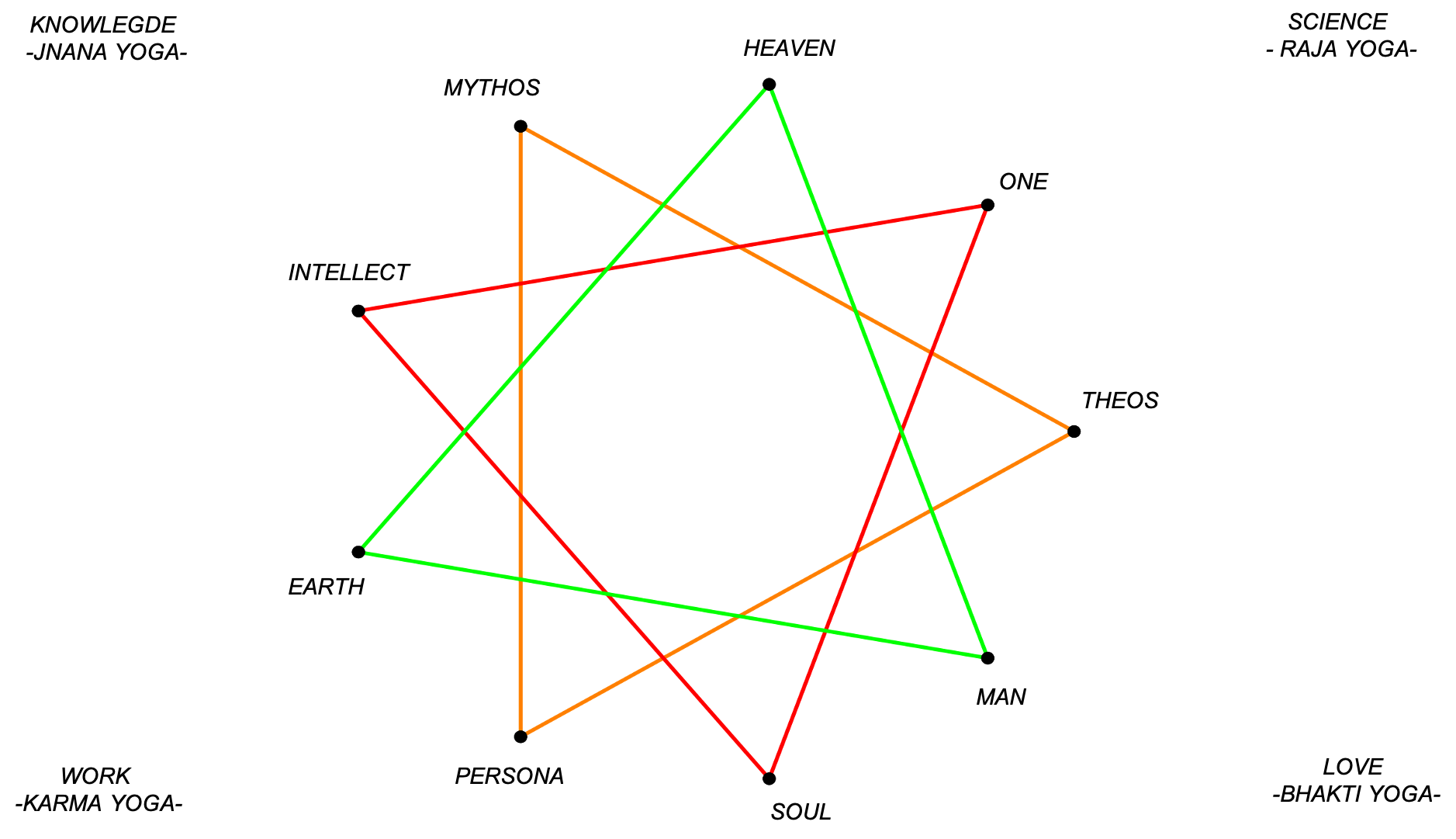

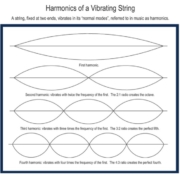
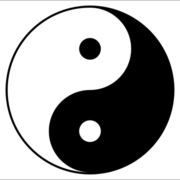
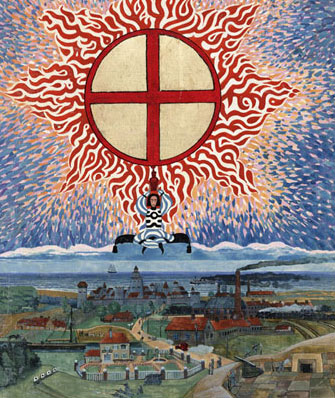
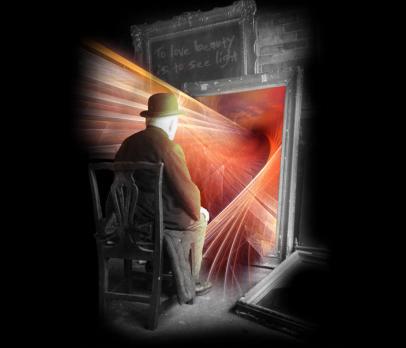
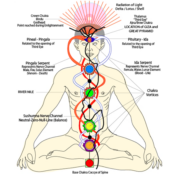


triadic thought and word formation is the illusion that binds – a fourth formed dimension of loving-kindness, the dhamma, metta exists independently of form and formlessness, it is thus – and after the fourth dimension, the a fifth, a sixth – why, do we use counting? is much the same as looking at the finger pointing at the moon and missing the point;the very idea or instrument and instructions of knowing kill off true wisdom and all at the expense of our innate genome activation and ever expanding awareness, perhaps and perhaps not!
Who am I to say?
Just breadcrumbs
nicely said, brought a smile – now we’re talking!